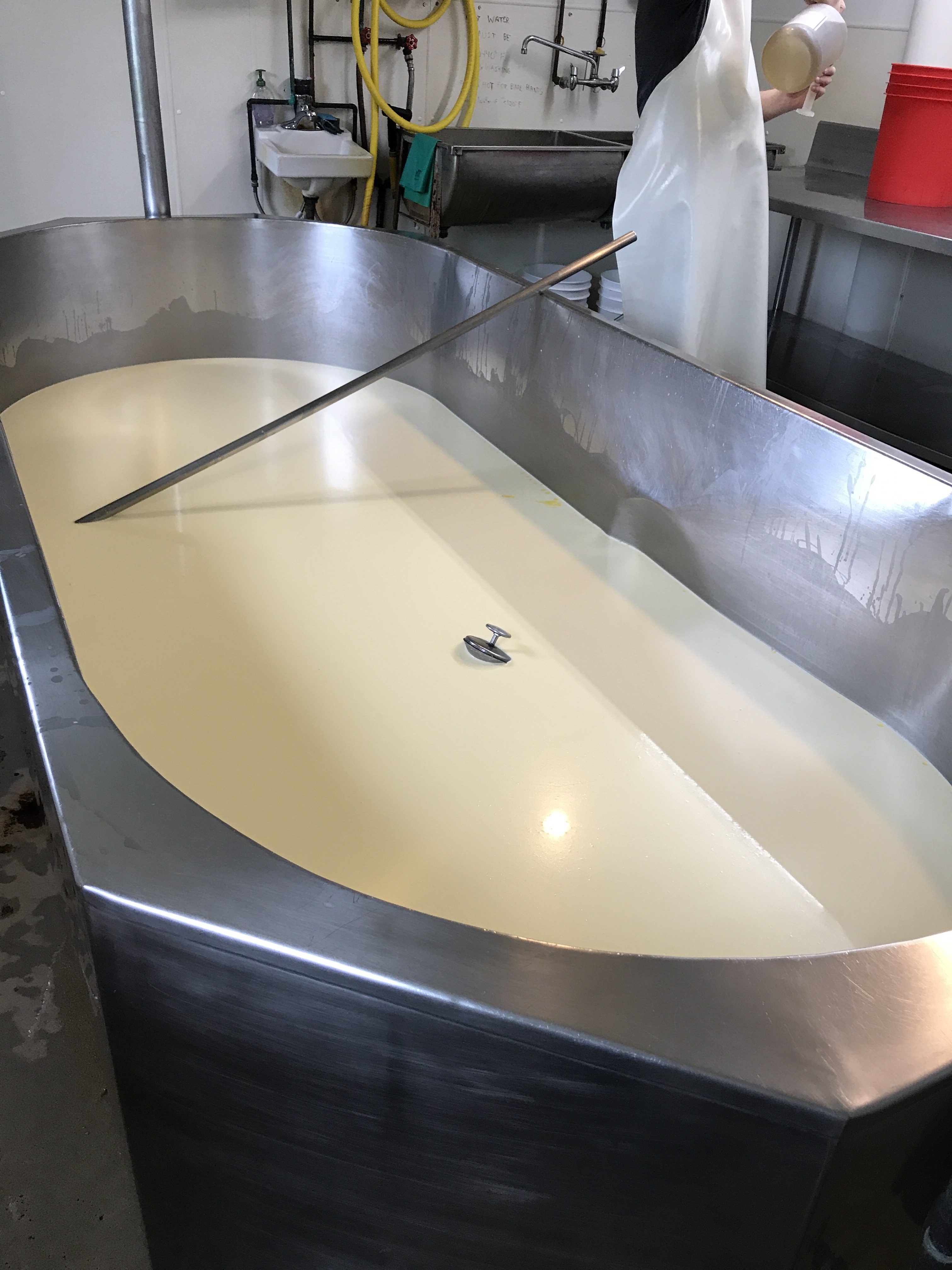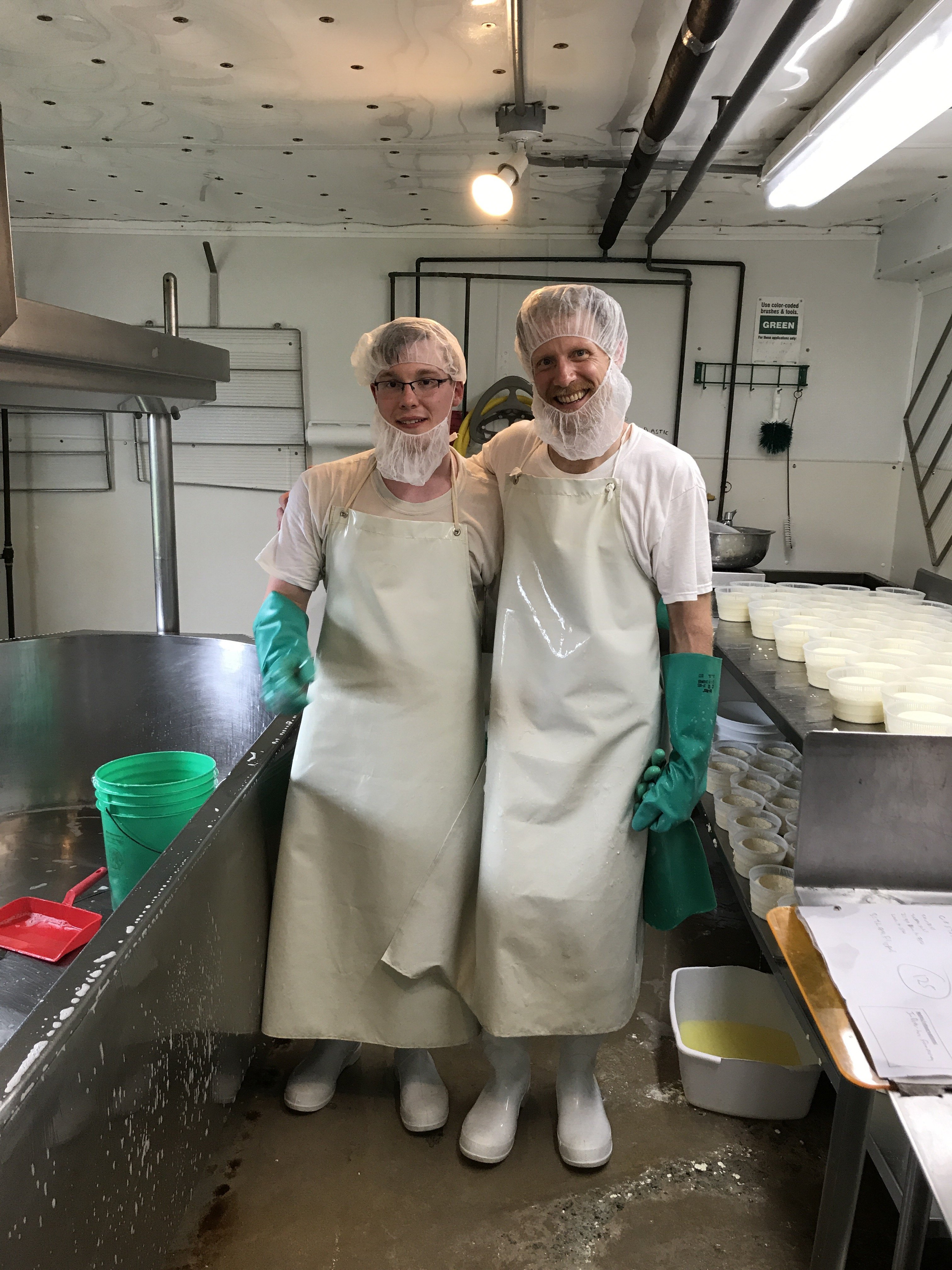I was really pleased when I was invited to join Cato Corner Farm in making cheese Thursday July 6th. Quite unexpected, but all the more delightful. It was just randomly I met Mark Gillman as he came by the cheese shop. We talked about cheese and I told him I had been invited to make cheese at Vulto Creamery, but due to very sad circumstances that was naturally cancelled. So Mark invited me straight away to come and make cheese with him.

Hooligan
The cheese to be made on that Thursday was Hooligan, a washed rind stinker to put it that way. I arrived at tweleve noon as agreed and was first given a tour in their cellar. A wide array of cheeses, most part of their standard assortment, but some they make more on impulse, like their clothbound cheddar. Cheddar is a very common cheese in New England, and Cato Corner Farm has no particular desire to be part of that “hype”. There are so many other cheeses to make.
Clean and ready
After changing into clean clothes, wellingtons and done a thorough hand and arm wash, I was ready to enter the cheese making room where some 550 litres of raw whole cow’s milk had already rested for a while with cultures added.
Then time to add the rennet, type calf’s, stirring the milk thoroughly for four minutes and then a 45 minutes’ wait for the milk proteins to coagulate.
All other cheese vats I have seen and worked with has been circular, this was oval though. I did not ask if that was for any particular reason, could just be it fitted well with the room.
Then a clean cut with sharp knife through the curd just to make sure the curd has coagulated properly and cutting the curd with a cheese harp (at least that is what it’s called in Norway). Cutting the curd by crisscrossing the harp. After that a time consuming, but fun prosess finding all the “big” chunks of curd that have omitted the “harp”, and cutting them with a knife. Took a while doing just that. But important for the end result.
Washing the curd
Next step was washing the curd in warm water. The whey was drained off and warm water added. This to release more whey.
After that; ladling the curd into the forms and leave for draining. Topping all the forms as the cheese curd sinks as the whey drains off. Basically, when all the 125 forms were filled it was time to turn the cheese in the form. Requires a certain technique of course, but I think I managed pretty well after a small while. The cheese is turned only once in the form, but left till the next day for further draining. And then down into the cellar for washing and maturing.
Well, after this I was dismissed while the others were left to clean the room and equipment.

Thanks for letting me join in.
If you want to buy their cheese, call on them or check their home page to find a reseller.
Cato Corner Farm
178 Cato Corner Road, Colchester CT
Email: info@catocornerfarm.com
Phone: 860.537.3884
Disclaimer: The above is not a complete description of the process of making cheese, there are a few other important details that for all practical purposes have been left out. After all, this is a blog post. 🙂
If you want to read more about Cato Corner Farm, Mastering Cheese by Max McCalman and David Gibbons has a whole chapter devoted to the farm.
